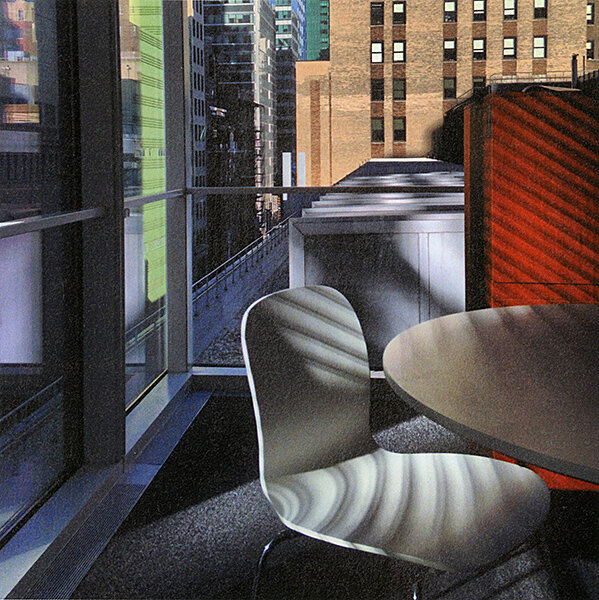'Office Romance' showcases the Renzo Piano-designed New York Times building
Loading...
Kathy Ryan’s Office Romance is a love affair with light and shape. It takes photography to its most basic form to create a beautiful experience.
Ryan is director of photography for The New York Times Magazine and has her office in the Renzo Piano-designed New York Times building erected in 2007.
Armed with an iPhone and confined to a great space, it seems almost as if Ryan conspires with Piano to explore how the 52-story landmark tower filters the “outside” into her “inside” world. As Piano himself notes in the book’s introduction, “From the beginning, the New York Times building was all about the light, and the vibration of light and shadow. In Kathy Ryan’s pictures, I’m happy to find somebody who has captured it!”
Ryan’s photos are not about the building’s architecture, but how it affects her workday. Images of her colleagues, the office computers, her workday rhythm and challenges, and even her sticky notes combine to immerse us in Ryan’s work experience.
This book has the qualities of meditation. The images seem to be the result of long and repeated observation that reveals and rewards those who slow down and take the time to pay attention. The photography in the book has modernist overtones since its primary focus is formal; moreover, the way it is printed, one same-size image per page, also points in that direction.
However, the images in this book do not feel like a throwback to the formal analysis of Edward Weston. Ryan does not take herself too seriously as a photographer. Her images were originally produced in and shared on Instagram, titled by time and date. She confesses that the power of the social media “like” fueled her drive to continue creating and sharing images.
What’s more “today” than that? Not much. Maybe the only thing missing is an author “selfie” on the book jacket.
Alfredo Sosa is the Monitor’s director of photography.






